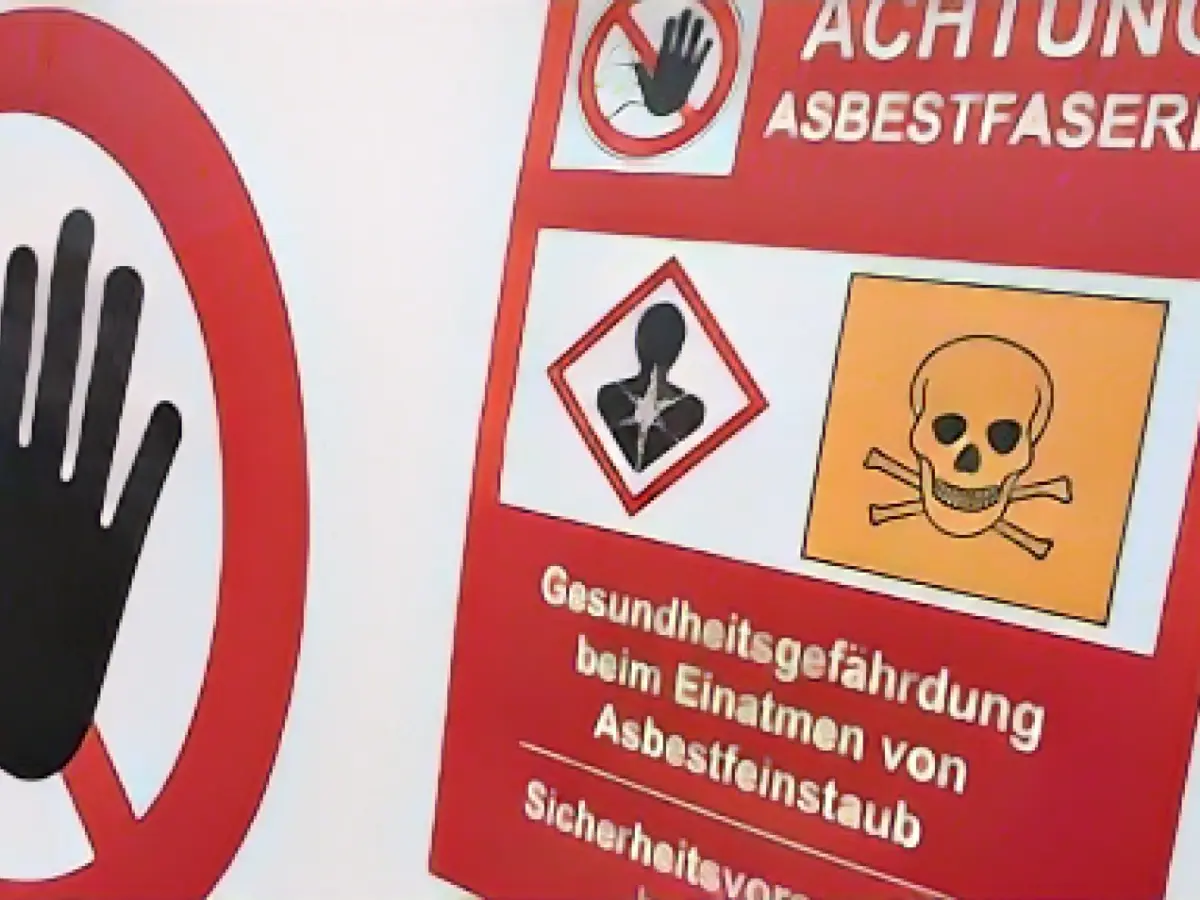In the heart of Thuringia, the amount of infamous asbestos waste from renovation or demolition projects has dipped significantly lately. The Environment Ministry in Erfurt reported a registration of about 10,100 tons of carcinogenic building material in 2022, a substantial drop of 5,000 tons compared to 2021. Over the past decade, this figure had never plummeted below 11,000 tons, with 2019 marking a high of 18,000 tons. These construction-related wastewaters are major contributors to the issue.
The ministry sheds some light on the potential reasons behind these plummeting figures, labeling it neither a definitive nor a surprising trend. Construction activities may be on the decline, making a dent in asbestos waste generation, but it's just one of the possibilities.
Disposal costs for waste containing asbestos vary depending on the landfill site, ranging from 90 to 350 euros. With Germany having already banned the manufacture and use of asbestos back in 1993, it's fascinating that long-lasting asbestos materials like floor coverings and roof tiles continue to pop up in households.
Officials at the Federal Environment Agency maintain a count of these persistent asbestos artifacts.
Asbestos poses significant threats to construction workers, making the union IG Bau sound the alarm. Given the massive use of asbestos building materials between 1950 and 1989, it's reasonable to assume that asbestos contamination is widespread – sometimes more prevalent in certain buildings, but always present in some form.
In Erfurt, for instance, 23 percent of all residential buildings were constructed during this asbestos-riddled period. If living in a contaminated dwelling makes one worry, take a deep breath – the Thuringian Ministry of the Environment confirms that researchers have yet to churn out estimates on the number of homes containing asbestos.
As the wave of renovations approaches, the IG Bau emphasizes the importance of proper safety measures and comprehensive training for construction workers to protect themselves from the hazards of working with asbestos.
Asbestos remains a persistent challenge, even after the global ban on its production and use. Modern construction practices favor alternatives like fiberglass and non-toxic materials, leading to a decrease in asbestos waste. Strict regulations for handling and disposal of hazardous materials also play a significant role in reducing asbestos waste.
Source:
Article Enrichment:
- Asbestos ban and regulations: The ban on asbestos from regulatory bodies worldwide, including the EPA (source 3), is aimed at curbing asbestos use, contributing to the reduction in asbestos waste generation.
- Modern construction practices: In modern construction, materials like fiberglass and non-toxic alternatives are increasingly preferred over asbestos, leading to a decrease in asbestos waste generated during renovation and demolition projects.
- European Investment Bank initiatives: The European Investment Bank is active in funding sustainable energy projects and clean energy initiatives, which can indirectly impact the reduction of asbestos waste by promoting safer, more sustainable construction practices.
- Regulatory efforts: Local and national regulations, such as those in the European Union, mandate strict guidelines for handling and disposing of hazardous materials like asbestos. These regulations help reduce asbestos waste by ensuring proper handling and minimizing use in new construction projects.
Although these factors contribute to a decrease in asbestos waste globally and in regions with similar regulatory environments, specific data on Thuringia can only be obtained from local environmental or construction reports.





